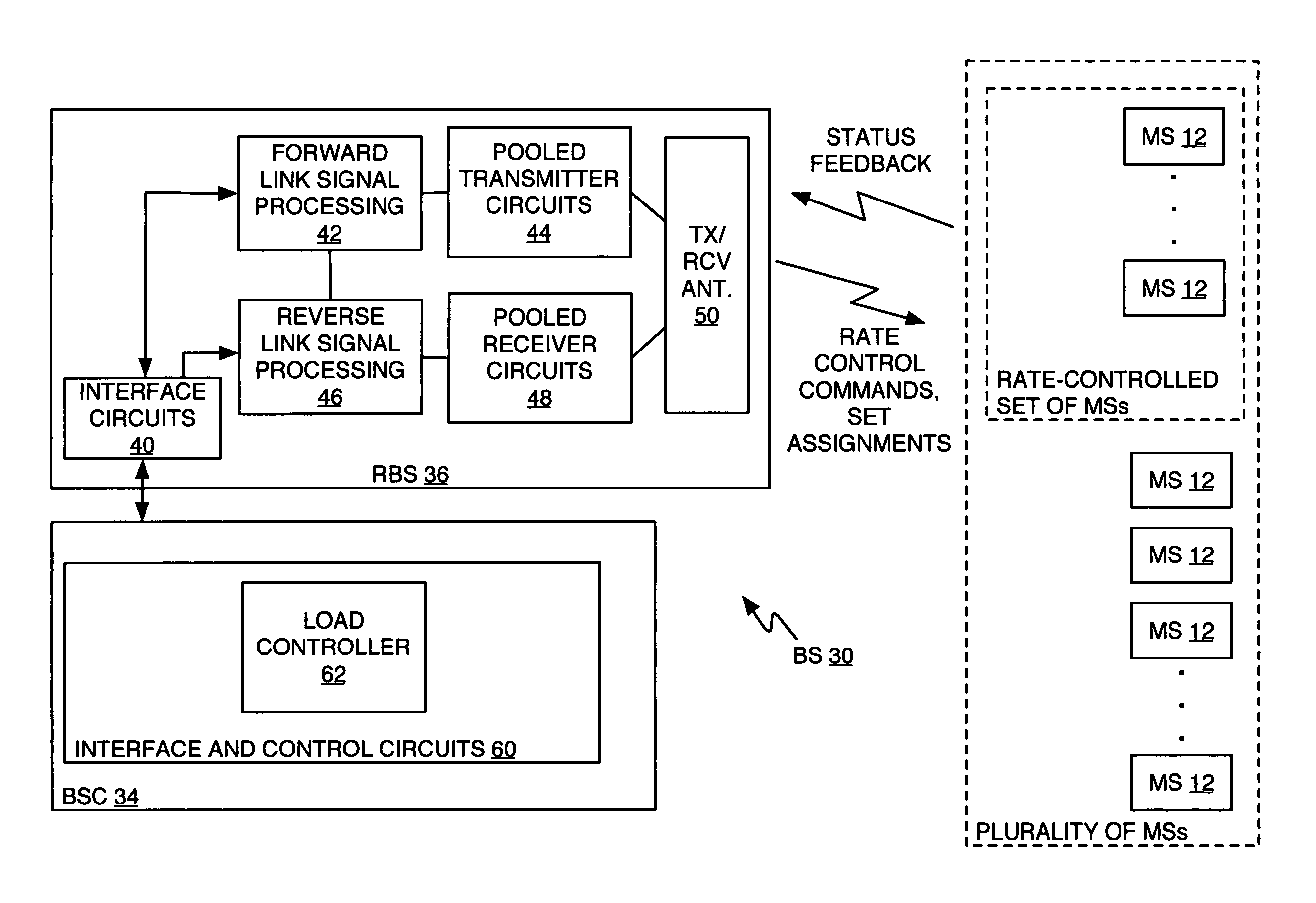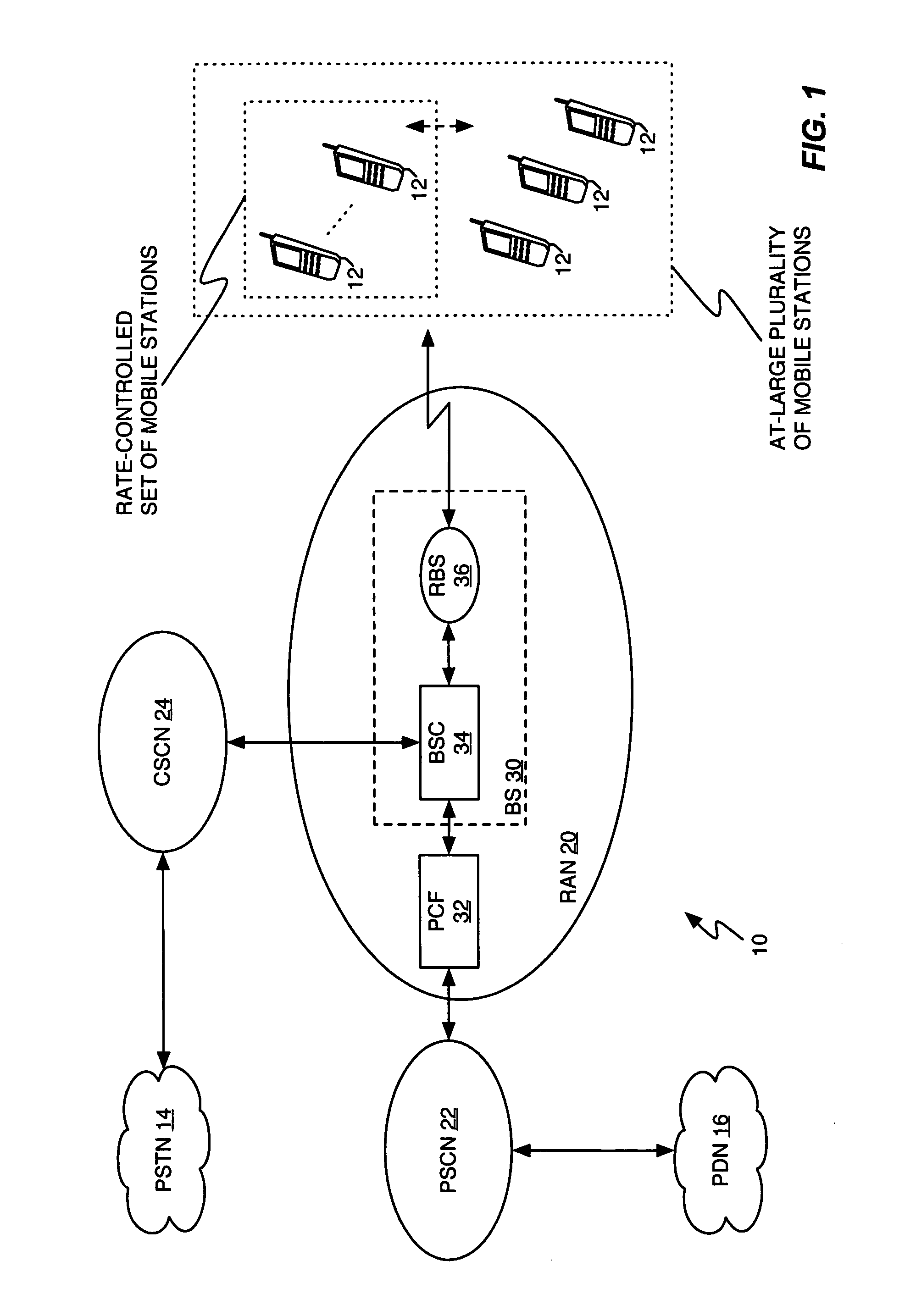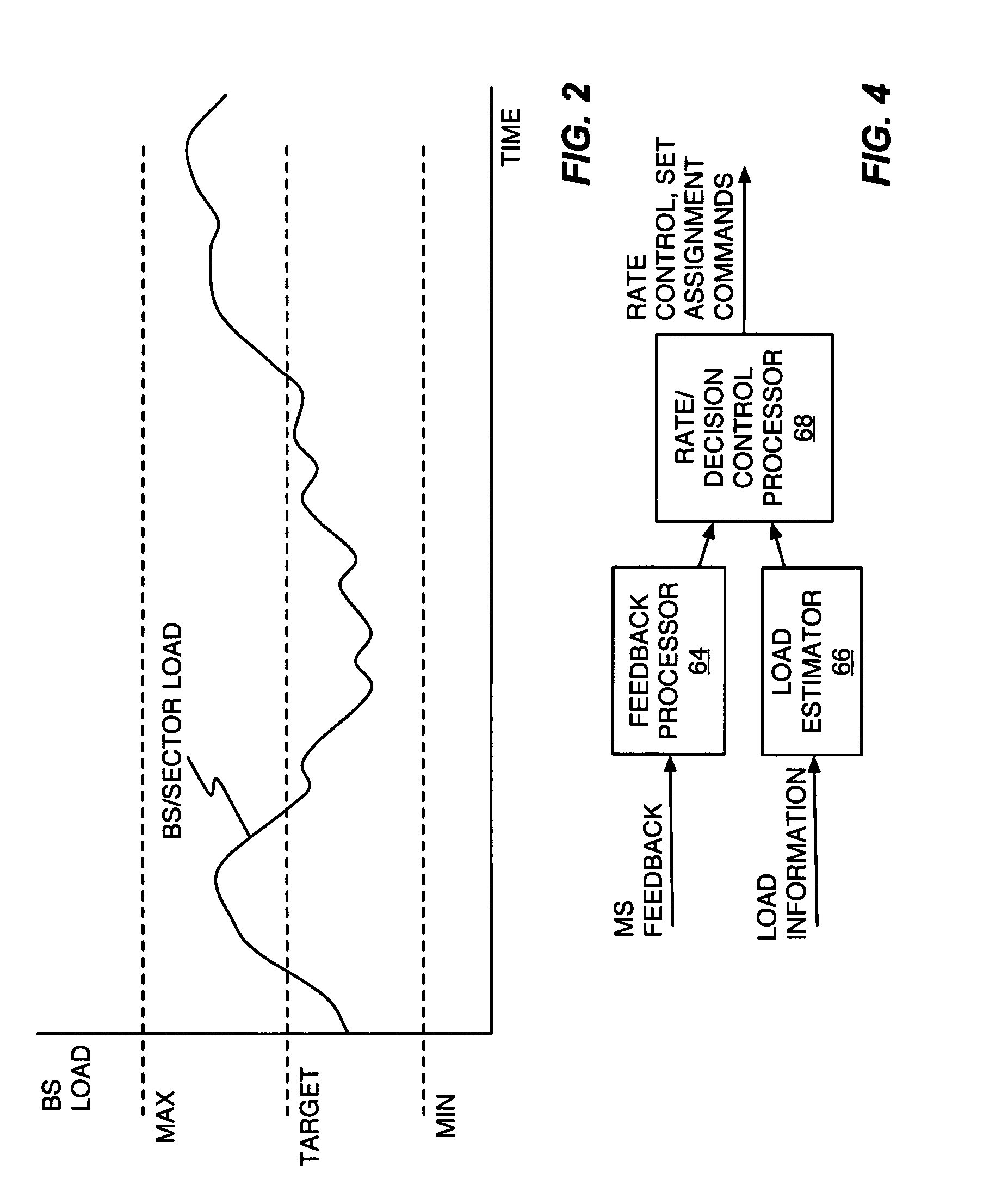Reverse link scheduler for CDMA networks
a reverse link scheduler and network technology, applied in the field of wireless communication networks, can solve the problems of the inability of the base the inability of the mobile station to further the inability of the mobile station to increase the reverse link data rate, so as to achieve the effect of reducing the number of mobile stations simultaneously
- Summary
- Abstract
- Description
- Claims
- Application Information
AI Technical Summary
Benefits of technology
Problems solved by technology
Method used
Image
Examples
Embodiment Construction
[0021]FIG. 1 illustrates an exemplary wireless communication network 10 configured according to one or more embodiments of the present invention. Network 10 may be a cdma2000 network, for example, but the present invention is not limited to cdma2000 networks and, indeed, has applicability to a broad range of network types, including, but not limited to, WCDMA networks.
[0022] Network 10 provides wireless communication support for a plurality of mobile stations 12. For example, network 10 may communicatively couple one or more of the mobile stations 12 to users of the Public Switched Telephone Network (PSTN) 14 or to users of a Public Data Network (PDN) 16, such as the Internet or other packet data network.
[0023] Supporting such connectivity, the exemplary network 10 comprises a Radio Access Network (RAN) 20 providing wireless signaling to and from the mobile stations 12, a Packet Switched Core Network (PSCN) 22 providing packet data communication with the PDN 16, and a Circuit Swit...
PUM
 Login to View More
Login to View More Abstract
Description
Claims
Application Information
 Login to View More
Login to View More - R&D
- Intellectual Property
- Life Sciences
- Materials
- Tech Scout
- Unparalleled Data Quality
- Higher Quality Content
- 60% Fewer Hallucinations
Browse by: Latest US Patents, China's latest patents, Technical Efficacy Thesaurus, Application Domain, Technology Topic, Popular Technical Reports.
© 2025 PatSnap. All rights reserved.Legal|Privacy policy|Modern Slavery Act Transparency Statement|Sitemap|About US| Contact US: help@patsnap.com



